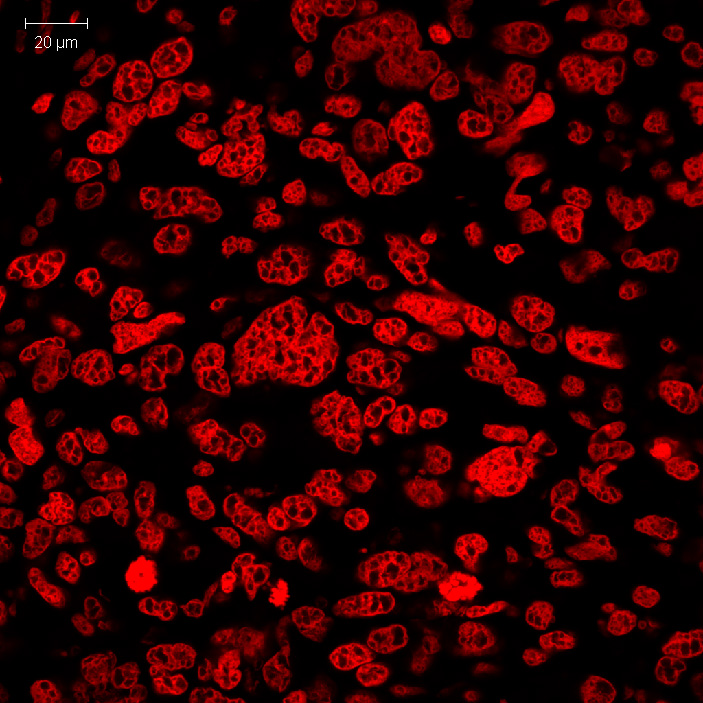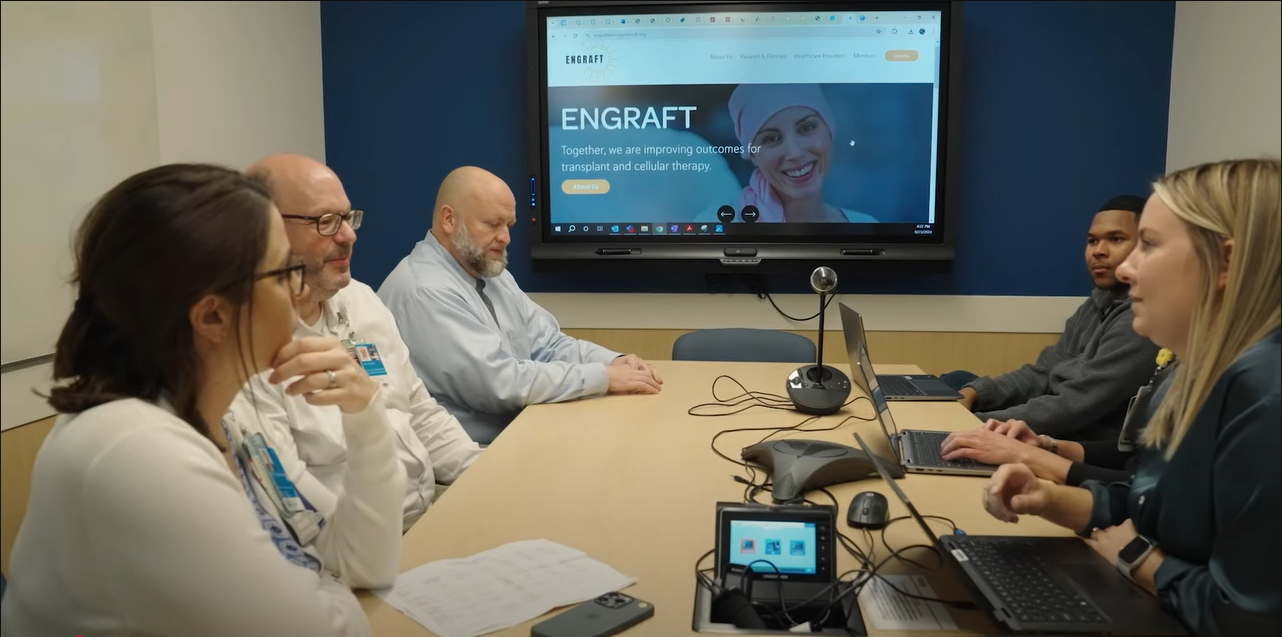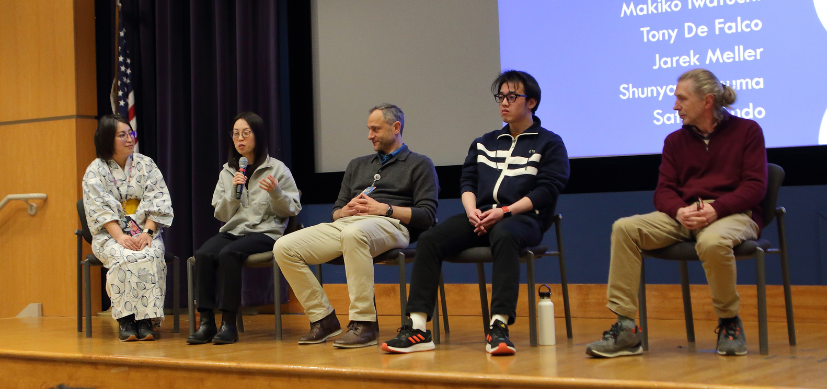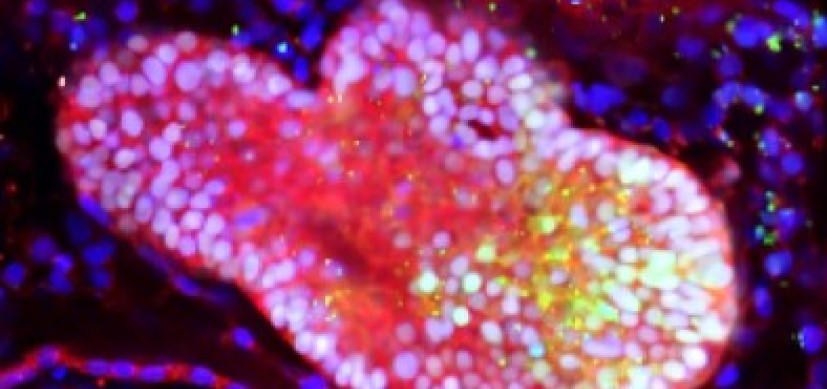Cracking the Code of NF1: A New Drug Shows Remarkable Promise for Shrinking Tumors
Research By: Nancy Ratner, PhD
Post Date: June 26, 2019 | Publish Date: Dec. 10, 2012

Science may be on the verge of cracking the code of neurofibromatosis 1 (NF1) – long labeled a disease without treatments.
Finding clues to solve the NF1 puzzle – a genetic condition that causes non-cancerous tumors to grow in the nervous system – has been slow and tedious since first described in 1882 by German pathologist Friedrich von Recklinghausen.
It is not from lack of trying. Researchers have devoted entire careers to understanding how NF1 works. They have tested chemotherapies, radiation and targeted molecular treatments in laboratories and, in some cases, on patients. Until recently, these efforts have been of little or no avail.
“We’ve never been able to shrink the tumors very well,” explains Brian Weiss, MD, an oncologist in the Cancer and Blood Diseases Institute at Cincinnati Children’s. “They have a lot of collagen and fibrous tissue in them. On average they grow very slowly. NF1 is just a very different animal than cancer.”
Now, a multi-institutional study led by Cincinnati Children’s researcher Nancy Ratner, PhD, indicates this “different animal” may almost be corralled. Published last December in the Journal of Clinical Investigation, the study demonstrates that using an experimental cancer drug to block a single, critical protein in the NF1 molecular process, MEK, is effective in mouse models of plexiform neurofibromas.
Working with the Neurofibromatosis Preclinical Consortium, the research team showed this targeted molecular therapy generated unprecedented results. In tests on mice, MEK inhibition significantly shrunk more than 80 percent of plexiform neurofibromas – the nerve tumors caused by NF1. The data were so compelling that researchers reported the study provided “strong rationale” for testing the drug in a clinical trial.
Working with a national group called the Neurofibromatosis Clinical Consortium – of which Cincinnati Children’s is a charter member – Weiss is finalizing plans for a multi-institutional clinical trial to determine whether the MEK inhibitor is effective in NF1 patients.
As to why MEK appears to shrink neurofibromas when other treatments have failed, Weiss says it may be MEK’s proximity in the cellular growth pathway to the source of the problem – the mutated NF1 protein. This makes it harder for the disease process to perform a molecular “end run,” which can happen when molecular targets are far downstream from the inciting molecular lesion.
It also may help explain why other tested drugs have had less success. For example, sirolimus blocks a molecule called mTOR, which is frequently implicated in other tumors and cancers. Weiss says mTOR is five steps away from the NF1 protein. Although sirolimus has worked with some tumors and cancers, it has not been effective at shrinking NF1 neurofibromas.
LIKE A CAR WITH NO BRAKES
NF1 is inherited. Only one defective copy of the NF1 gene is needed to trigger the disease. If one parent has the disease, then children have a 50 percent chance of getting NF1. The prevalence of NF1 is about one of every 3,000 children born. More than 100,000 people in the United States have the disease.

The NF1 gene normally acts to prevent uncontrolled cell growth in nerves and to block tumor formation. When the NF1 gene mutates and loses function, “it’s like hitting the gas pedal on a car with no brakes,” according to Weiss. Cells in the nerves grow and accumulate abnormally.
Neurofibromas can grow to be quite large – unsightly and disfiguring as well as sometimes painful and dangerous. In some cases, large plexiform neurofibromas can turn into deadly malignant peripheral nerve sheath tumors (MPNSTs). Exactly what causes this malignant transformation remains unknown. Other than being able to perform the occasional surgery in certain cases, there still is no way to treat plexiforms or MPNSTs.
“Our goal is curative therapy. We want to prevent tumors from forming or completely ablate them.”
—Nancy Ratner, PhD
Although the recent MEK inhibitor study showed nominal ability to slow growth of MPNSTs in mice, the tumors refuse so far to yield to available treatments.
Still, many people with NF1 can live long lives. Weiss notes that NF1 tumors tend to grow slowly, so years can pass before they become problematic, if at all. Although an advantage for patients, slow tumor growth can be a challenge when trying to design a clinical trial.
Plexiform neurofibromas can remain stable for almost a year, making it difficult and time consuming to evaluate medicines that may only slow or prevent the growth of tumors rather than shrink them. NF1 patients would also need to be on medicines for longer periods of time compared to people with faster-growing tumors.
“It comes down to managing acceptable levels of risk for the patient,” Weiss says. “In cancer, where the result of not treating is death, you may be willing to take certain risks. In NF1, it can be a different set of considerations.”
CHALLENGES REMAIN IN SOLVING NF1 PUZZLE
Ratner has studied NF1 her entire career and produced milestone findings on how the disease process works. Although she is pleased to see clinical trials open for a drug that may be able to stop or shrink NF1 plexiform neurofibromas, it is only one part of the NF1 puzzle.
“Being able to manage the disease would be a huge step forward,” she says. “But our goal is curative therapy. We want to prevent tumors from forming or completely ablate them.”
Despite these remaining challenges, Ratner is hopeful about finding other pieces of the puzzle. She was there when good answers were far and few between, and when research more or less centered on dissecting patient tumor samples and analyzing them under a microscope. But technology such as bioinformatics and advanced MRI capabilities — along with talent and hard work — are producing new possibilities.
“The success we have seen gives me real hope that soon we will be able to identify drugs that really do melt these neurofibromas so they won’t come back,” Ratner says.
Her team also has a list of candidate molecular targets that might kill off MPNST cells. The results, however, are still early. “We need more verification before we can discuss it.”
—Story originally appeared in the Winter 2013 edition of Research Horizons.
| Original title: | MEK inhibition exhibits efficacy in human and mouse neurofibromatosis tumors |
| Published in: | JCI: The Journal of Clinical Investigation |
| Publish date: | Dec. 10, 2012 |








